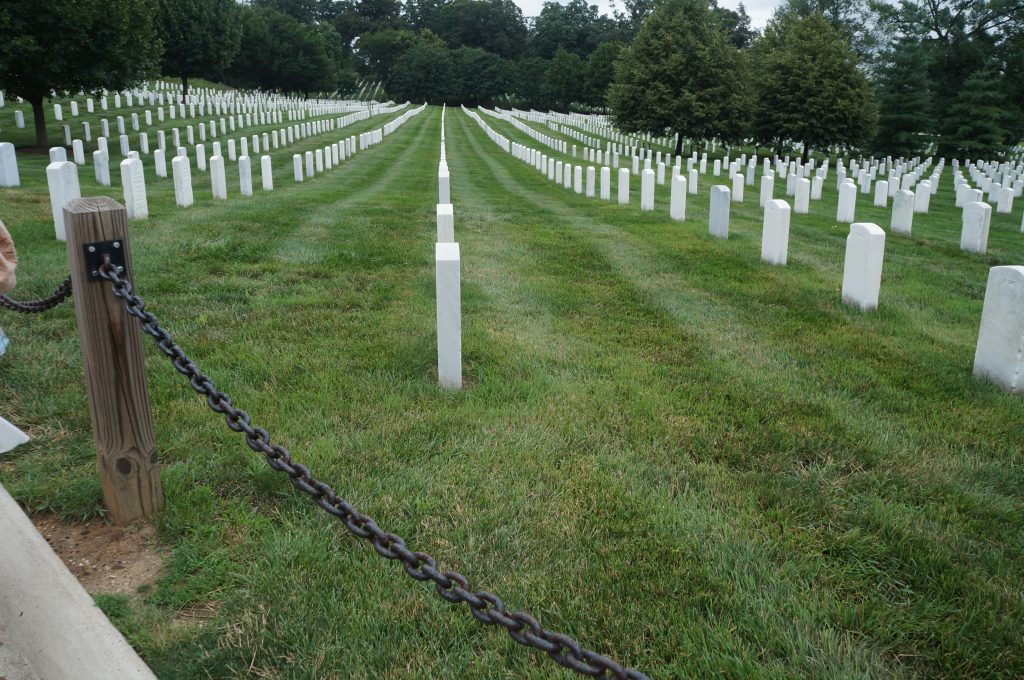Last Updated on June 26, 2024

A photo from my trip to the Arlington National Cemetery in Virginia while volunteering with the Inter-Exchange Foundation.
A Visit to Arlington National Cemetery: A Volunteer Tour Guide’s Experience
In the fall of 2023, I had the unique opportunity to volunteer as a tour guide for a group of high school students from China visiting the Arlington National Cemetery in Virginia. This experience was made possible through the Inter-Exchange Foundation, an organization dedicated to promoting cultural exchange and understanding. As we embarked on this journey, the significance of the cemetery and its role in American history became profoundly clear to all of us.
The Arrival at Arlington National Cemetery
Our group arrived at Arlington National Cemetery on a crisp, sunny morning. The air was filled with a sense of reverence and anticipation. The cemetery, with its meticulously maintained lawns and rows upon rows of white marble headstones, exuded a solemn beauty. I began our tour by sharing some background information about the cemetery.
“Welcome, everyone, to Arlington National Cemetery,” I started. “This is not just a cemetery; it’s a place of honor for those who have served in the United States military. Over 400,000 service members, veterans, and their families are buried here. It’s a place where we remember and pay tribute to the sacrifices made for our country.”
The students listened attentively, their expressions a mix of curiosity and respect. For many of them, this was their first visit to the United States, and Arlington National Cemetery was a significant and symbolic destination.
The History of Arlington National Cemetery
We walked towards the entrance, where a large map of the cemetery was displayed. I pointed out some key landmarks as I delved into the history of the site.
“Arlington National Cemetery was established during the Civil War in 1864,” I explained. “The land originally belonged to the family of Mary Custis Lee, the wife of Confederate General Robert E. Lee. After the Lee family abandoned the estate, the U.S. government seized the property and designated it as a military cemetery.”
I could see the students’ eyes widen in surprise at this piece of history. The story of how Arlington became a national cemetery is indeed fascinating, with layers of historical context that reflect the complexities of the Civil War and its aftermath.
The Tomb of the Unknown Soldier
Our first major stop was the Tomb of the Unknown Soldier, one of the most revered sites within the cemetery. As we approached, we could see the perfectly aligned rows of headstones leading up to the memorial. The Tomb of the Unknown Soldier is guarded 24/7 by members of the 3rd U.S. Infantry Regiment, also known as “The Old Guard.”
“Here lies an unidentified soldier from World War I,” I said, as we gathered near the tomb. “This tomb symbolizes all unidentified soldiers who have died in service to the United States. It represents the countless sacrifices made by service members whose names we may never know.”
The students watched in silence as the guard ceremoniously marched back and forth in front of the tomb. The precision and discipline of the guard’s movements were mesmerizing. It was a powerful reminder of the respect and honor afforded to those who have given their lives for their country.
Witnessing the Changing of the Guard
We were fortunate to arrive just in time to witness the Changing of the Guard ceremony. This ritual takes place every hour on the hour and is a testament to the dedication and respect shown by the military to their fallen comrades.
As the new guard approached, the two soldiers executed a series of precise movements, symbolizing the seamless transition of duty. The old guard passed on the responsibility with a solemn handshake, a gesture that conveyed a deep sense of duty and respect.
“Why do they change guards every hour?” one of the students asked, breaking the silence.
“The Changing of the Guard ceremony is a tradition that demonstrates the continuous vigilance and honor given to the Unknown Soldier,” I explained. “It’s a way to ensure that the memory and sacrifice of the unknown soldiers are always respected and never forgotten.”
Exploring the Memorial Amphitheater
Next, we made our way to the Memorial Amphitheater, a grand structure that serves as the venue for official ceremonies on national holidays, such as Memorial Day and Veterans Day. As we walked through the amphitheater, I pointed out the inscriptions on the marble walls, which commemorate various battles and military leaders.
“This amphitheater was dedicated in 1920,” I said. “It’s a place where we come together to honor those who have served and sacrificed. The President of the United States often delivers speeches here on important national holidays.”
The students were impressed by the grandeur of the amphitheater, with its large marble columns and expansive seating area. It was a stark contrast to the quiet, solemn atmosphere of the cemetery, yet it served the same purpose of honoring the military’s service and sacrifice.
The Kennedy Gravesites
From the amphitheater, we proceeded to one of the most visited sections of the cemetery: the gravesites of President John F. Kennedy and his family. As we approached, we could see the Eternal Flame, which burns continuously at President Kennedy’s gravesite.
“President John F. Kennedy is buried here along with his wife, Jacqueline Kennedy Onassis, and two of their children,” I explained. “The Eternal Flame was lit by Mrs. Kennedy during the president’s funeral in 1963. It symbolizes hope and the enduring legacy of President Kennedy’s vision for America.”
The students gathered around the gravesite, taking in the significance of the Eternal Flame. The inscriptions on the nearby plaques highlighted key moments from Kennedy’s life and presidency, providing a deeper understanding of his impact on American history.
The Space Shuttle Challenger Memorial
Our next stop was the Space Shuttle Challenger Memorial, a tribute to the seven astronauts who lost their lives in the tragic 1986 shuttle explosion. The memorial, a simple yet poignant marker, was adorned with fresh flowers and American flags.
“The Challenger disaster was a tragic event in our nation’s history,” I said. “This memorial honors the brave astronauts who perished in the accident. It’s a reminder of the risks and sacrifices involved in space exploration.”
The students looked thoughtful as they read the names of the astronauts inscribed on the memorial. The story of the Challenger disaster resonated with them, highlighting the universal themes of courage, sacrifice, and the pursuit of knowledge.
Learning About Medal of Honor Recipients
We continued our tour by visiting the gravesites of several Medal of Honor recipients. The Medal of Honor is the highest military decoration awarded by the United States government, given for acts of valor above and beyond the call of duty.
“These headstones marked with a gold star represent Medal of Honor recipients,” I explained. “These individuals demonstrated extraordinary bravery and selflessness in the face of danger.”
I shared the stories of a few notable recipients, such as Audie Murphy, one of the most decorated American combat soldiers of World War II. The students were captivated by the tales of heroism and sacrifice, gaining a deeper appreciation for the courage displayed by these service members.
Reflecting on the Experience
As we concluded our tour, we gathered in a quiet section of the cemetery to reflect on the day’s experience. The students, though initially strangers to the concept of Arlington National Cemetery, had developed a profound understanding and respect for the sacrifices made by American service members.
“Thank you for guiding us through this cemetery,” one of the students said. “I didn’t realize how much history and sacrifice are represented here. It’s very moving.”
Their words touched me deeply. As a volunteer tour guide, my goal was to provide a meaningful and educational experience. Seeing the impact it had on the students was incredibly rewarding.
The Importance of Cultural Exchange
This experience underscored the importance of cultural exchange and understanding. The students from China not only learned about American history and military service, but they also had the opportunity to share their own perspectives and experiences. It was a mutual exchange of knowledge and respect, fostering a deeper connection between our two cultures.
As we left Arlington National Cemetery, I felt a sense of gratitude for the opportunity to volunteer with the Inter-Exchange Foundation. The experience reminded me of the power of travel and cultural exchange to bridge gaps, foster understanding, and create lasting memories.
In conclusion, my visit to Arlington National Cemetery with the group of Chinese high school students was a profound and enriching experience. It was a journey through history, honor, and sacrifice, seen through the eyes of those who have served and those who came to learn. It reaffirmed the significance of remembering our past, honoring our heroes, and continuing the tradition of cultural exchange to build a more connected and understanding world.




There is very few things more poignant than cemeteries like this.